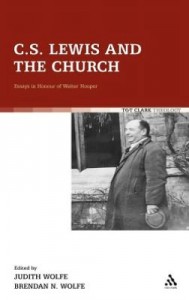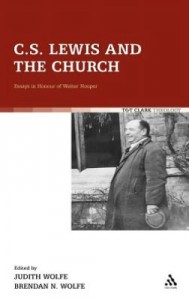Editor’s note: We pleased to publish this review (in two parts--read the first part here) by friend of Mere-O Dr. Thomas Ward.
In the profoundest essay of the collection, “C.S. Lewis and the Eschatalogical Church,” Judith Wolfe amplifies the thesis that it is in Lewis’s portrayals of heaven that we come closest to his ecclesiology. The Church, she writes, “just like the individual person, is for Lewis primarily a heavenly or eschatalogical reality, and only secondarily an earthly one (p.109).” The individual is primarily an eschatalogical reality because human life here below is marked by longing for something existing outside of spatiotemporal reality and only in achieving the object of this desire are we complete or truly ourselves. The Church is therefore eschatalogical because the Church is simply “the community of the saved (p.109).”
We do not know just what we will be (other than that we will be whole) so we don’t know just what the Church will be. But we do know that we were made in the image of God and that the fulfillment of our individuality will consist at least in part of a restoration (and/or perfection) of this image. This gives direction to our efforts here below: our part is to cooperate with God’s work in us, “to become clear mirrors in which [the image of God,] when God looks at them, can find reflection (p.108).”
In Mere Christianity Lewis extended the mirror metaphor to include not just the relationship between an individual and God, but between individuals: “Men are mirrors … of Christ to other men.” Reflecting on this, and also on Lewis’s chapter on philia in The Four Loves, Wolfe extends the mirror image even further: “Humans know themselves not by reflecting on themselves, but by being reflected by others (p.114).”
Wolfe finds “the most sustained visualization” of this idea in That Hideous Strength, when the Ladies of St. Anne’s don their ceremonial robes and admire one another. They do not need a looking glass, as Jane remembers the Director’s words, that we are “mirrors enough to see another.” Wolfe then makes the following bold inference:
If we see ourselves most accurately in the mirror of another’s loving face, then it is because our deepest identity is being loved—there is no ‘I’ apart from that ‘I’ as loved by God, and there is no accurate view of that ‘I’ apart from the ‘I’ that is loved (p.115).
That there is no accurate view of the ‘I’ apart from the ‘I’ that is loved seems to be both correct and what Lewis thinks. But Wolfe goes too far, I think, in her claim that there is no ‘I’ apart from the ‘I’ as loved, and I don’t see any reason to attribute it to Lewis. Relata are prior to relations, in the sense that there must be things before there can be relations between things. Love might bring me into being, but the relation God’s-loving-me cannot obtain until He who is Love has made me.
Login to read more
Sign in or create a free account to access Subscriber-only content.
Topics:
